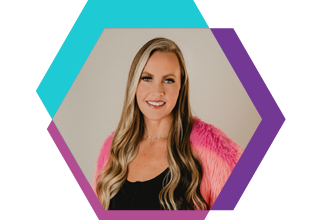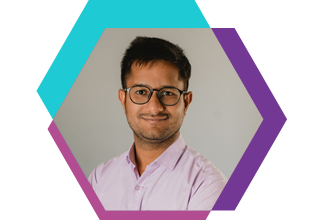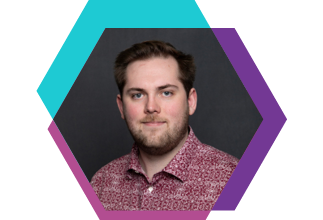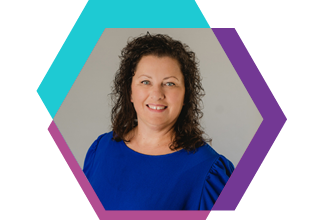Your Guide to Buying Your First Home
We're here for you
Why Buy a Home? The Benefits of Homeownership
Build Equity
Every mortgage payment you make builds equity in your home, helping to grow your wealth over time.
Tax-Free Growth
When you sell your primary residence, any profit you make is generally tax-free, allowing you to grow your wealth without penalties.
Stability
Owning a home gives you the freedom to settle into a community, make long-term plans, and personalize your living space.
Predictable Housing Costs
With a fixed-rate mortgage, your payments remain steady, giving you peace of mind and protecting you from rising rent prices.
How Much Do You Need for a Down Payment?
High-Ratio Mortgage
- Minimum Down Payment: The amount you need for a down payment depends on the price of the home you're buying. In Canada, the minimum down payment requirements are:
- Homes under $500,000: Minimum 5% of the purchase price.
- Homes between $500,000 and $999,999: 5% on the first $500,000 and 10% on the remaining amount.
- Homes over $1 million: Minimum 20% of the purchase price.
- Requires Mortgage Insurance: Since you're borrowing more than 80% of the home's value, you’ll need to purchase mortgage default insurance from providers like CMHC (Canada Mortgage and Housing Corporation) or Sagen.
- Higher Monthly Costs: The insurance premium is added to your mortgage payments, which increases your monthly costs slightly. The premium ranges from 2.8% to 4% of your mortgage amount, depending on your down payment size.
- Lower Initial Savings Requirement: A high-ratio mortgage lets you buy a home with a smaller down payment, allowing you to get into the market sooner.
Tip: Even though a smaller down payment is more accessible, you’ll pay more in the long run due to mortgage insurance. If possible, try to save at least 20% to avoid this cost.
Conventional Mortgage (20% or More Down Payment)
-
No Mortgage Insurance Required: With a conventional mortgage, you avoid the additional cost of mortgage insurance.
-
Lower Monthly Payments: Since you’re borrowing less and avoiding insurance premiums, your monthly mortgage payments will be lower.
-
Increased Equity: A larger down payment gives you more immediate equity in your home and helps you pay off your mortgage faster.
-
More Financial Security: Saving 20% or more allows for more flexibility and security, reducing your debt load from the start.
Strategies for Saving for a Down Payment
Open a First Home Savings Account (FHSA)
-
Tax Benefits: The FHSA allows you to contribute up to $40,000 toward your first home. Contributions are tax-deductible (like an RRSP), and withdrawals for your down payment are tax-free.
-
Contribution Limits: You can contribute up to $8,000 per year and carry forward unused contributions if you don’t max out in a given year.
Use the RRSP Home Buyers' Plan (HBP)
-
Borrow from Your RRSP: If you’ve been contributing to an RRSP, you can withdraw up to $60,000 tax-free to put toward your down payment under the Home Buyers’ Plan. Couples can withdraw up to $120,000 combined.
-
Repayment: You’ll have 15 years to repay the amount back into your RRSP, starting two years after your withdrawal.
Automate Your Savings
-
Set Up Automatic Transfers: Set up regular automatic transfers from your spending account to the savings or investment account dedicated to your down payment. This ensures you’re consistently saving without having to think about it.
-
Cut Unnecessary Expenses: Review your budget to identify areas where you can cut back and redirect that money toward your down payment fund.
A mortgage is a loan used to purchase a home, and there are a few key terms to understand:
-
Fixed-Rate Mortgage: Your interest rate stays the same for the term of the loan, giving you consistent payments.
-
Variable-Rate Mortgage: The interest rate fluctuates based on market conditions, meaning your payments could change over time.
-
Amortization Period: The length of time it will take to repay your mortgage, typically 25 years.
-
Term: The length of time your mortgage agreement is in effect before you need to renew, usually between 1 and 5 years.
How Much Can You Afford?
Try Out our Mortgage Calculator
- see how much home you can afford
- estimate your payments
- find out how long it will take to pay off your home, and more!
Gross Debt Service Ratio (GDS)
Total Debt Service Ratio (TDS)
Talk to us
Not sure where to start? Our mortgage experts can walk you through your options, help you understand affordability, and find the best solution for you. Let’s make your homeownership goals a reality!
Your mortgage payment is more than just a number—it’s shaped by several key factors that determine how much you pay each month and over time. Check out this infographic for a simple breakdown of what influences your payment.
- Mortgage Amount – The more you borrow, the higher your payment. Your down payment directly affects this.
- Interest Rate – Even a small rate change can mean thousands more (or less) in interest over the life of your mortgage.
- Loan Term – A shorter term = higher payments but big interest savings, while a longer term = lower payments but more interest paid overall.
Want to see how these factors impact your budget? Try our Mortgage Calculator to find a payment that works for you!
Learn more
| Mortgage Calculator | |
| Homebuying Step by Step |
Check out this Guide to Buying a Home in Canada by our mortgage insurance partner CMHC
|
| Facts about mortgages |
Flex your financial fitness muscle with this all-in-one homebuyer's guide
|
| Enrich |
Check out Enrich - an award-winning financial education platform!
|
Next Steps: Start Your Homeownership Journey
Get Pre-Approved
Open Your First Home Savings Account (FHSA)
Try Out Our Mortgage Calculator
Ready to Buy? Apply for a Mortgage Now!
Meet our Member Experience Team

Maria Ursu
Member Relationship Specialist
T 306-842-9539

Naresh Amarnani

Julie Reich

Eric Schlosser
Member Relationship Specialist
T 306-842-9575

Marcy Heimlick
Member Relationship Specialist
T 306-842-9529

Nolan Ling
Beyond the credit union, Maria is also a hairstylist and has been perfecting her craft for over 24 years. She loves the creative aspect of doing hair and the meaningful connections she gets to build with her clients.
Outside of work, Maria is all about balance. She’s a certified mindfulness and meditation instructor, bringing a sense of calm and focus to everything she does. But don’t be fooled—she pairs her zen mindset with a go-getter attitude, whether she’s hitting the gym, traveling to new places, or indulging in her love for all things Disney.
Maria’s passion for people, wellness, and adventure makes her an invaluable part of the WCU team, always ready to serve with both heart and hustle.

As a Member Relationship Specialist, Naresh is dedicated to guiding members through major financial milestones—whether it’s buying their dream home, securing a loan, or building long-term financial stability. He believes in taking a personalized, relationship-first approach, ensuring every member feels supported, informed, and empowered.
For Naresh, every interaction is meaningful. He’s committed to building trust, fostering financial confidence, and helping members achieve their goals—one conversation at a time.

With expertise as a CUIC Consumer and Residential Mortgage Lender, Julie is always eager to expand her knowledge and stay ahead of the game. She thrives on new opportunities and isn’t afraid to roll up her sleeves to find the best solutions for her members.
Outside of work, Julie’s energy doesn’t stop. She’s dedicated to fitness, mental well-being, and keeping life balanced—whether that’s hitting the gym, baking up a storm, or spending time with her pets and family. Her spunky personality and can-do attitude make her a powerhouse both in and out of the office.
With Julie in your corner, you’re not just making financial moves—you’re making them with confidence and speed. Let’s get things done!

A lifelong resident of Weyburn, Eric has been deeply involved in the community through sports, both as a player and a coach. He thrives on connection and collaboration, making it his mission to help members navigate their financial paths with confidence.
When he’s not working with members to achieve their goals, you’ll likely find Eric catching a game, staying active, or making the most of summer at Kenosee Lake. Whether on the field, at the lake, or in the office, he’s always focused on the next big win.
With Eric on your team, you’re not just planning for the future—you’re making it happen. Let’s get started!

For Marcy, building relationships isn’t just part of the job—it’s what she loves most. She has a heart of gold and a natural ability to make life easier for others, both inside and outside the office. Whether she’s offering financial advice, helping a member secure a loan, or just being a supportive voice, her number one priority is making sure people feel empowered and supported.
When she’s not working her magic at WCU, Marcy is on the go as a dedicated gymnastics mom, cheering on her two daughters and keeping up with their busy schedule. Growing up on a farm instilled a work ethic that never quits, and she brings that same drive to everything she does.
With Marcy in your corner, you’re not just getting financial guidance—you’re getting a dedicated problem-solver who genuinely cares. She’s here to make things happen and make them happen smoothly. Let’s get to work!

Originally from Kenosee Lake, he made Weyburn his home in 2013 and quickly became an active part of the community. Whether he’s officiating hockey, coaching minor baseball, or hitting the golf course, Nolan knows the value of teamwork and dedication—both on and off the field.
Passionate about making a difference, Nolan is committed to building strong relationships and finding the right financial solutions for every member he works with. He’s here to listen, guide, and help turn financial goals into reality.
With Nolan on your side, you’re not just planning for the future—you’re moving toward it with confidence. Let’s make it happen!



1
Apply now
1
Apply now
2
Get pre-approved
2
Get pre-approved
3
Start your house hunt
3
Start your house hunt
4
Finalize your mortgage
4
Finalize your mortgage
We’ll need to collect some information for your application. Having it ready will help speed up your approval. Here’s what you need to have on hand:
- Personal information – We’ll need your name, date of birth, legal and/or mailing address, phone number, email, Social Insurance Number, government-issued photo ID, marital status, number of children, occupation, and name of your employer.
- Proof of your income in two different forms – You can provide us with a copy of two current paystubs, a letter of employment, your most recent T4 slip, your most recent Tax Return or Notice of Assessment.
- Detailed list of your assets and liabilities – For example, for a vehicle that you own, we would need the year, make & model, as well as it’s approximate current value. For savings or investments, we need to know what type of investments you have, where they’re held, and what their current value is. For liabilities, we’ll need a list of things you owe money on such as credit cards, loans, or support payments.
- Proof of where your down payment is coming from – Some common sources include personal savings, an RRSP withdrawal, a non-repayable gift from an immediate family member, proceeds from the sale of other property, and funds borrowed against proven assets.
Note: We’ll also need to pull a credit report. At least one of the applicants must have a credit score greater than 600 to qualify.

 Search
Search






 www.google.com
www.google.com

